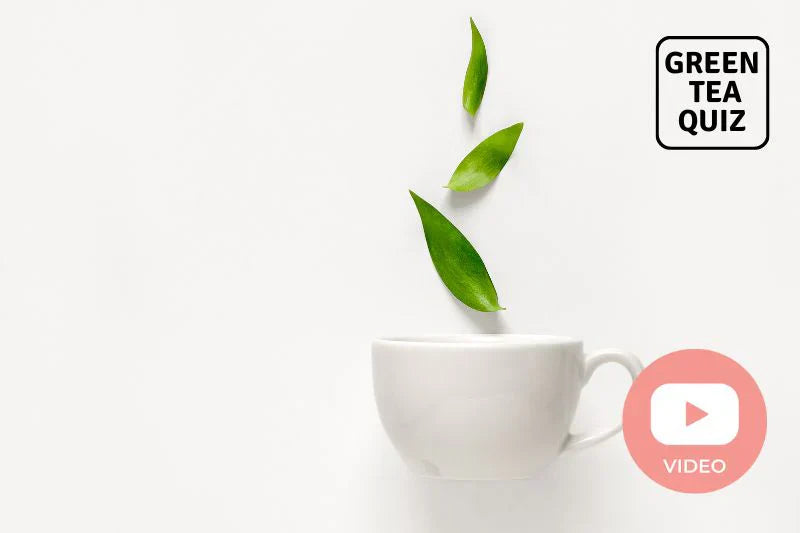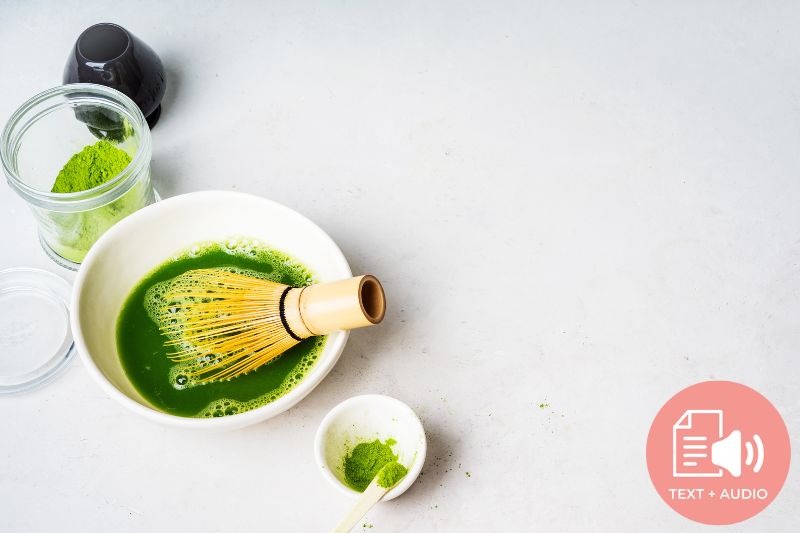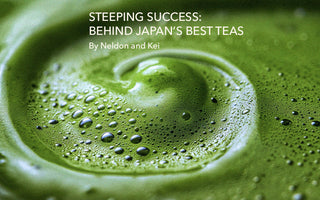For people who like to grow their herbs, vegetables, and other produce, one of the most common questions for tea lovers is, whether they can plant tea shrubs at home. The simple answer is yes. Almost any plant can be grown within a comparable natural habitat, and there are parts of the United States that are very conducive to growing tea shrubs. Tea plants can also grow outside of their natural habitats if the same conditions are created at home.
Before planting, it's important to understand the basic needs of a tea plant to mimic its native environment successfully. Tea shrubs prefer acidic soil with good drainage, moderate humidity, and consistent moisture without waterlogging. Choosing the right location—preferably with morning sun and afternoon shade—can make a significant difference in plant health and yield. Additionally, understanding your local USDA growing zone can help determine whether you'll need to grow your tea plant in the ground or in a pot that can be brought indoors during cold seasons.
Prime Regions of Growth
When it comes to the traditional tea plant used for Japanese Green Tea, white tea and black tea, these shrubs can be easily grown in the southern United States with the warm year-round climate. While these plants thrive in warmth, tea plants should be grown in partial shade for best results.
For people who live in the northern regions of the country, the tea shrub can be planted in a pot that is portable so it can be brought inside during the colder months. If you have a climate-controlled greenhouse, the plants can stay in the greenhouse year-round and typically do quite well. If you live in the northern colder region and you want to let your tea shrubs grow outside in the warmer months and move them to an indoor greenhouse for the fall and winter seasons, this should work out very well.
In coastal regions with high humidity and mild winters—such as parts of the Pacific Northwest or the Carolinas—tea plants may also thrive if protected from frost and given proper soil conditions. It's also important to consider wind protection, especially in open areas, as strong winds can dry out young shrubs and damage tender leaves. In urban environments, balconies or patios with partial sun can serve as ideal microclimates, especially when pots are used to control soil composition and drainage. Regardless of the region, the key to success lies in replicating the tea plant's native subtropical environment as closely as possible.
Types of Tea Plants
Two different types of tea shrubs make all the traditional tea blends that most consumers are familiar with. The top tea plant used in the United States is the Camellia sinensis plant which is known globally as the primary tea plant for non-herbal tea. This plant is widely grown throughout the Far East and in other warmer agricultural climates. There are two subspecies of this type of tea plant, and each comes from a different part of the Far East. These are the Camellia sinensis var. Sinensis from China and Japan, and Camellia sinensis var. Assamica from Assam, India. Each of these can be purchased in seed packets. These tea shrubs create the "Japanese Green tea", "Chinese Green tea ”, “black tea,” or “white tea” varieties depending on how you process the tea leaves once harvested.
Both the Camellia sinensis var. Sinensis and Camellia sinensis var. Assamica will readily grow in U.S. zones 7-9. While most people think of shrubs as smaller plants, tea shrubs can grow up to 40 feet in height. However, it is not recommended to let them grow tall if they are going to be used for continuous tea harvest. To get the most flavorful teas, your tea plants should be kept at 4 to 6 feet in height. Keeping them from overgrowing is easy and can be accomplished by regular pruning. The tea plant is drought resistant and does well in warmer climates.
When choosing between the two subspecies, it's useful to consider your local climate and the type of tea you prefer to make. Camellia sinensis var. Sinensis is better suited for cooler climates and higher elevations, producing delicate, mild teas such as green and white tea. On the other hand, Camellia sinensis var. Assamica thrives in hotter, humid regions and is favored for stronger, bolder teas like black and pu-erh. Home growers may experiment with both to explore different flavor profiles and find which one adapts better to their environment. Additionally, some specialty nurseries offer hybrid varieties bred for resilience and flavor, which can be a smart choice for first-time tea gardeners.

The Growth Process
Once the tea shrubs are planted and begin to grow, it is easy to get excited about your first harvest. However, tea agriculturalists agree that it is wise not to start any harvesting of the tea leaves and buds until the shrub grows into a full shrub. As with any shrub, the first couple of years are the most important for growth. This is when the plant needs to retain all its nutrients. Waiting will ensure the plant is healthy enough to start a regular harvest. The recommended amount of time is three years. Once the plant reaches harvest growth levels, there are two primary harvests throughout the year. The first harvest is in the early spring and other in the summer.
During the initial growth phase, it's essential to focus on building a strong root system and sturdy branches. This means consistent watering—especially during dry spells—and using organic mulch around the base to retain moisture and regulate soil temperature. Applying a slow-release, acidic fertilizer designed for camellias or azaleas can also support healthy development without overstimulating leaf production. As the plant matures, gardeners can begin gentle shaping through light pruning to encourage bushier growth, which will eventually lead to more productive harvests. Patience during these formative years will greatly improve both yield and leaf quality in the long term.

The Basics of the Harvest
Once the plant reaches harvest growth levels in the third year, there are two primary harvest periods and one flower harvest. The first harvest typically is done in the early spring, and the other is done in the middle of summer. The first primary harvest that makes the best tea leaves for Japanese Green Tea, traditional white tea, and black tea is in Mid-May to early June. This is when the leaves are their most flavorful and nutrient-dense. The second harvest is typically in early to Mid-July. Later harvests tend to produce less flavor and less quality.
The reason the first harvest is so flavorful and nutrient-dense is because the tea plant stays mostly dormant in the winter months, so growth is nominal. When spring finally arrives, the shrub automatically produces a first growth that is aromatic and filled with a light, delicate flavor and packed with nutrients. The plant will continue to grow after July. However, later season leaves can be bitter, which is not best for making teas such as Japanese Green Tea.
Since there are several harvests, it is essential to try to keep the plant in a constant stage of early growth to assure the best in flavor and quality of each harvest. Regular pruning will ensure the plant does not overgrow. The harvested batch will be small for each plant when they are young. If you are trying to have your tea harvest last for a while, then you should grow at least four or five plants.
At each harvest, you should pick the top two green leaves of each stem and one bud from the flowering part of the plant. While this may seem like a small harvest, it is essential to keep to a basic harvest. This helps the plant stay vital and healthy for each growing season. Allowing the lower leaves to remain intact gives extra strength to the base of the shrub and provides for the very best of the plant to be harvested.
Proper timing is just one part of a successful harvest—how you handle the leaves after picking is equally important. To preserve the delicate flavor and nutrients, freshly plucked tea leaves should be processed immediately, especially in warmer weather. This can involve basic techniques like pan-firing or steaming to stop oxidation, followed by gentle rolling and drying, depending on the type of tea you wish to create. If you're harvesting for green tea, minimal oxidation is ideal, while black tea benefits from full oxidation for a bolder taste. Experimenting with small batches can help you perfect your processing method while deepening your understanding of how each step influences the final brew.
The Little White Flowers of Fall
The fall harvest is usually the prime season when the tea plant has beautiful white, 1 1/2" tea flowers that come into bloom. These blooms ensure that your plant isn't only productive but is also a lovely part of your landscaping; if you have multiple planted together, they can even serve as a beautiful privacy fence. While the two harvest seasons for tea is spring and summer, the white flower of the plant only arrives in the fall. The fall flowers can be a great addition to boost the spring and summer harvested leaves. If these are correctly dried, they will enhance the natural flavors of the tea and make it a much richer blend.
In addition to enhancing flavor, these fall-blooming tea flowers also offer subtle health benefits, as they contain natural antioxidants and aromatic compounds. Some tea enthusiasts even brew the dried flowers on their own for a light, floral infusion similar to chamomile or osmanthus tea. When drying the flowers, it’s best to lay them flat in a well-ventilated area away from direct sunlight to preserve their fragrance and color. Once dried, they can be stored in an airtight container and added sparingly to your spring or summer tea leaves for a delicate floral note that elevates the complexity of your homemade blends.
Final Thoughts
Growing your own tea plant at home is not only possible—it’s a deeply rewarding experience for gardeners and tea lovers alike. Whether you live in a warm southern climate or a cooler northern region, with the right care, soil, and seasonal planning, your tea shrubs can thrive and yield flavorful, aromatic leaves year after year. From the excitement of the first harvest to the delicate beauty of fall tea flowers, cultivating tea at home brings you closer to the process behind every soothing cup. With a little patience and attention, your backyard or balcony can become a small but vibrant tea garden.
Get Free Bonus Books

Sign up for free to the Green Tea Club to get advice and exclusive articles about how to choose Japanese Tea, and tips, tricks, and recipes for enjoying Japanese tea.
About the author
Kei Nishida
Author, CEO Dream of Japan
Certification: PMP, BS in Computer Science
Education: Western Washington University
Kei Nishida is a passionate Japanese green tea connoisseur, writer, and the founder and CEO of Japanese Green Tea Co., a Dream of Japan Company.
Driven by a deep desire to share the rich flavors of his homeland, he established the only company that sources premium tea grown in nutrient-rich sugarcane soil—earning multiple Global Tea Champion awards.
Expanding his mission of introducing Japan’s finest to the world, Kei pioneered the launch of the first-ever Sumiyaki charcoal-roasted coffee through Japanese Coffee Co. He also brought the artistry of traditional Japanese craftsmanship to the global market by making katana-style handmade knives—crafted by a renowned katana maker—available outside Japan for the first time through Japanese Knife Co.
Kei’s journey continues as he uncovers and shares Japan’s hidden treasures with the world.
Learn more about Kei







